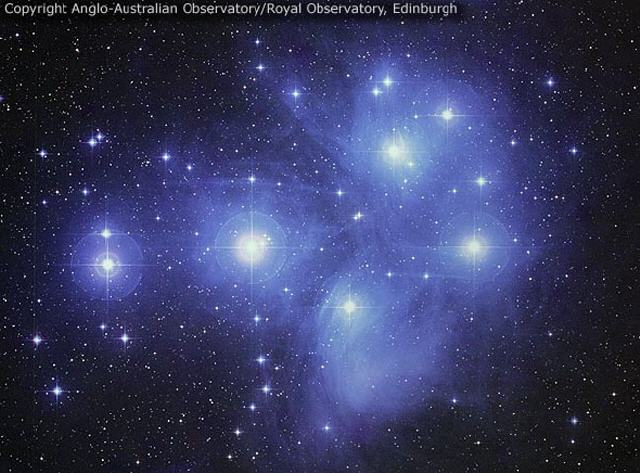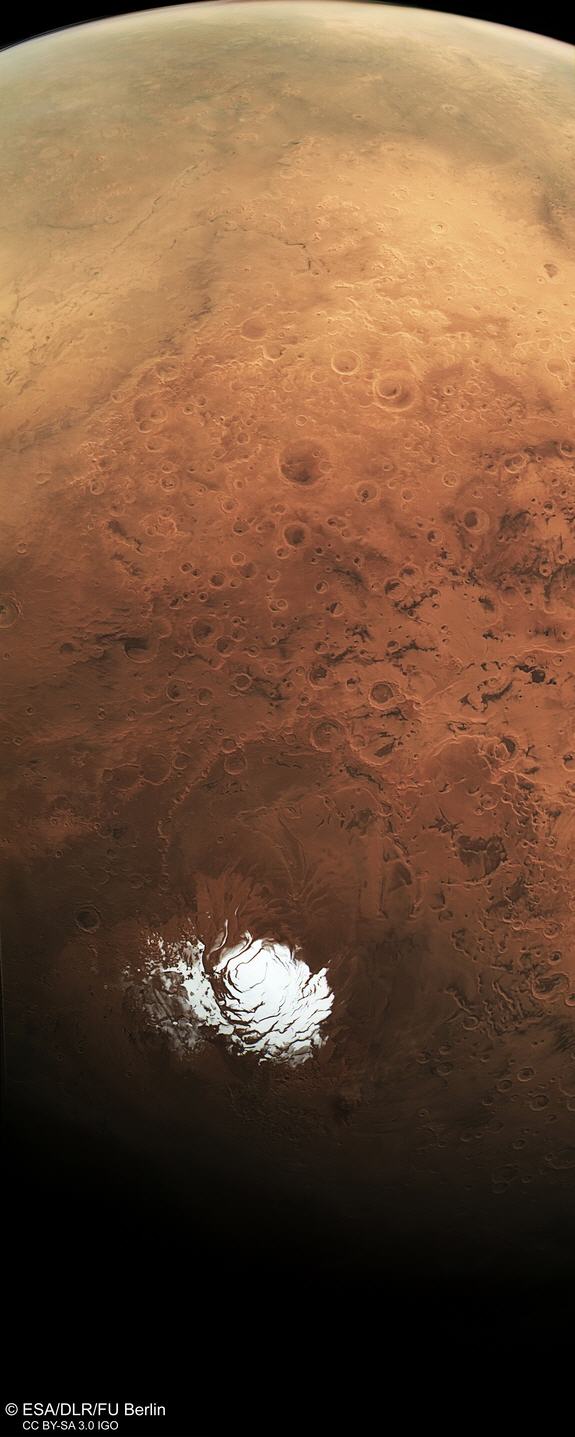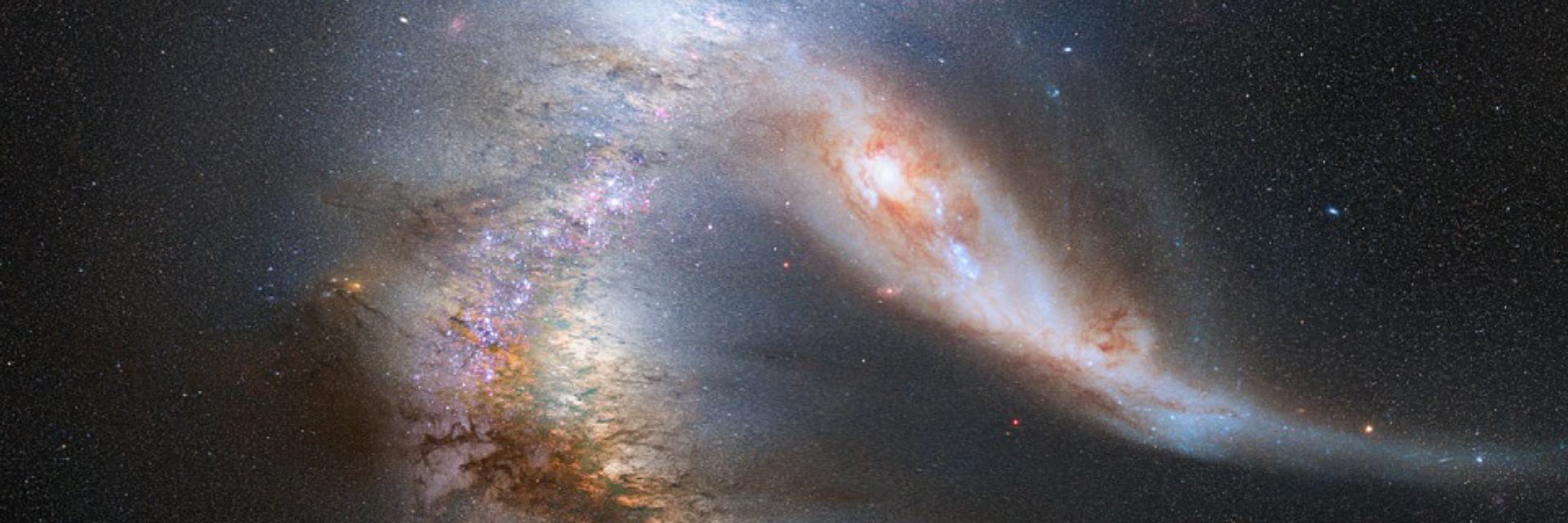Planets, Star systems, Galaxies
Comparisons of Planets, Stars, Galaxies
Hubble's greatest snaps
Pleiades
Vesta

NASA Science News for Dec. 9, 2011 NASA's Dawn probe, now orbiting Vesta in the asteroid belt, has found some surprising things on the giant asteroid--things that have prompted one researcher to declare Vesta "the smallest terrestrial planet."
FULL STORY at http://science.nasa.gov/science-news/science-at-nasa/2011/09dec_vestaplanet/
NASA Science News for April 29, 2013 NASA's Cassini spacecraft has provided the first direct evidence of small meteoroids crashing into Saturn's rings.
FULL STORY: http://science.nasa.gov/science-news/science-at-nasa/2013/26apr_saturnids/
Water on Ceres
Water Detected on Dwarf Planet Ceres
From: noreply@nasascience.org
To: snglist@nasascience2.org
Subject: Water Detected on Dwarf Planet Ceres
Date: Wed, 22 Jan 2014 17:11:19 -0500
NASA Science News for Jan. 22, 2014 Scientists using the Herschel space observatory have made the first definitive detection of water vapor on the largest and roundest object in the asteroid belt, dwarf planet Ceres.
FULL STORY: http://science.nasa.gov/science-news/science-at-nasa/2014/22jan_ceres/
Young Volcanoes on the Moon
From: noreply@nasascience.org
To: snglist@nasascience2.org
Subject: Evidence for Young Lunar Volcanism
Date: Mon, 13 Oct 2014 00:56:33 -0500
NASA Science News for October 13, 2014 NASA's Lunar Reconnaissance Orbiter has found strong evidence of geologically young volcanic activity on the moon. Some deposits appear to be less than 100 million years old, corresponding to Earth's Cretaceous period, the heyday of dinosaurs.
Nov 24, 2014: Back in 1971, Apollo 15 astronauts orbiting the Moon photographed something very odd. Researchers called it "Ina," and it looked like the aftermath of a volcanic eruption.
There's nothing odd about volcanoes on the Moon, per se. Much of the Moon's ancient surface is covered with hardened lava. The main features of the "Man in the Moon," in fact, are old basaltic flows deposited billions of years ago when the Moon was wracked by violent eruptions. The strange thing about Ina was its age.
Planetary scientists have long thought that lunar volcanism came to an end about a billion years ago, and little has changed since. Yet Ina looked remarkably fresh. For more than 30 years Ina remained a mystery, a "one-off oddity" that no one could explain.
Turns out, the mystery is bigger than anyone imagined. Using NASA's Lunar Reconnaissance Orbiter, a team of researchers led by Sarah Braden of Arizona State University has found 70 landscapes similar to Ina. They call them "Irregular Mare Patches" or IMPs for short.
"Discovering new features on the lunar surface was thrilling!" says Braden. "We looked at hundreds of high-resolution images, and when I found a new IMP it was always the highlight of my day."
"The irregular mare patches look so different than more common lunar features like impact craters, impact melt, and highlands material," she says. "They really jump out at you."
On the Moon, it is possible to estimate the age of a landscape by counting its craters. The Moon is pelted by a slow drizzle of meteoroids that pepper its surface with impact scars. The older a landscape, the more craters it contains.
Some of the IMPs they found are very lightly cratered, suggesting that they are no more than 100 million years old. A hundred million years may sound like a long time, but in geological terms it's just a blink of an eye. The volcanic craters LRO found may have been erupting during the Cretaceous period on Earth--the heyday of dinosaurs. Some of the volcanic features may be even younger, 50 million years old, a time when mammals were replacing dinosaurs as dominant life forms.
"This finding is the kind of science that is literally going to make geologists rewrite the textbooks about the Moon," says John Keller, LRO project scientist at the Goddard Space Flight Center.
IMPs are too small to be seen from Earth, averaging less than a third of a mile (500 meters) across in their largest dimension. That's why, other than Ina, they haven't been found before. Nevertheless, they appear to be widespread around the nearside of the Moon.
"Not only are the IMPs striking landscapes, but also they tell us something very important about the thermal evolution of the Moon," says Mark Robinson of Arizona State University, the principal investigator for LRO's high resolution camera. "The interior of the Moon is perhaps hotter than previously thought."
"We know so little of the Moon!" he continues. "The Moon is a large mysterious world in its own right, and its only three days away! I would love to land on an IMP and take the Moon's temperature first-hand using a heat probe."
Some people think the Moon looks dead, "but I never thought so," says Robinson, who won't rule out the possibility of future eruptions. "To me, it has always been an inviting place of magnificent beauty, a giant magnet in our sky drawing me towards it."
Young volcanoes have only turned up the heat on the Moon's allure. Says Robinson … "let's go!"
Credits:
Author: Dr. Tony Phillips | Production editor: Dr. Tony Phillips | Credit: Science@NASA
FULL STORY: http://science.nasa.gov/science-news/science-at-nasa/2014/13oct_moonvolcano/
Mars' Mysterious South Pole
Mars' Mysterious South Pole Revealed in New Photo
http://www.space.com/30807-mars-mysterious-south-pole-photo.html?cmpid=NL_SP_weekly_2015-10-13
by Kasandra Brabaw, Space.com Contributor | October 13, 2015 07:45am ET
A newly released photo provides a great look at Mars' seldom-seen South Pole.
The swirling white dot toward the bottom of the photo, which was taken by the European Space Agency's Mars Express spacecraft, is the Red Planet’s south polar ice cap. The cap is composed of both frozen water and frozen carbon dioxide, and it changes shape with Mars' seasons.
In 2004, Mars Express confirmed that the south polar cap contains water ice, according to the European Space Agency (ESA).
While the image was released last month, Mars Express captured it on Feb. 25, during summer in Mars' southern hemisphere. The ice cap was relatively small at the time; during winter, the cap grows to fill the smooth region that can be seen surrounding it in the photo, ESA officials said.
The crater-scarred area above the ice cap is the Red Planet's ancient southern highlands, and part of the giant Hellas basin can be seen at the top left of the image.
The Hellas basin spans more than 1,367 miles (2,200 kilometers) and is about 5 miles (8 km) deep. Scientists think a powerful asteroid impact gouged out this basin shortly after Mars formed. Two thin, wiggly lines on the outer edges of the basin correspond to two deep valleys — Dao Vallis and Niger Vallis — that may have been carved into the planet's surface by water.
The image was something of a happy accident. A photo showing a region of Mars this wide is unusual, ESA officials said, because Mars Express typically takes images pointing straight down toward the planet's surface at an altitude of about 186 miles (300 km). That's the closest to the planet that the spacecraft comes during its elliptical orbit.
But in this photo, called a "broom calibration image," the spacecraft turned so that its camera looked over the surface while far above the planet, at around 6,151 miles (9,900 km) — the farthest it gets from Mars.
"Importantly, as well as affording an unusually wide view, this allows the camera to record a range of features at the same illumination conditions, allowing essential calibration of the camera's sensors," ESA officials wrote in an image description.
Editor's Note: This story was updated to reflect a correction. The Mars Express orbiter did not discover the polar ice caps on Mars, but confirmed that they contain water ice.
Follow Kasandra Brabaw on Twitter @KassieBrabaw. Follow us @Spacedotcom, Facebook and Google+. Original article on Space.com.

